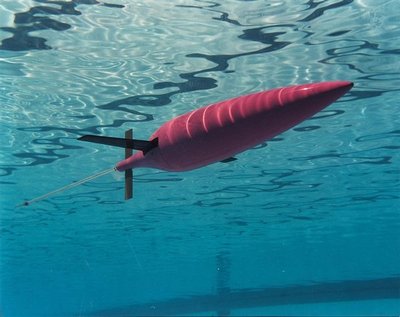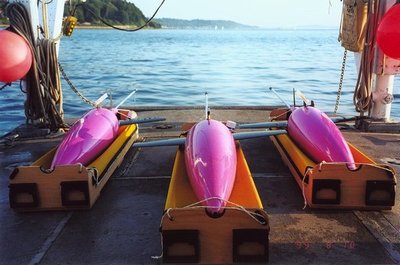June 11, 2008
iRobot secures licensing agreement for UW’s Seagliders
University of Washington record-holding, ocean-observing robots that operate at sea for months at a time — traveling thousands of miles at the behest of operators on land directing activities via a satellite phone network — will be commercially produced by iRobot under a licensing agreement announced this week.
iRobot has secured rights to the Seaglider vehicle and technology with an agreement through UW TechTransfer. iRobot is a U.S. company that makes behavior-based robots for the consumer market and the military that are able to do a range for tasks from cleaning floors to disarming explosives.
Seagliders, developed since 1995 by the UW’s Applied Physics Laboratory and the School of Oceanography, have:
- Repeatedly set the world’s endurance record for autonomous underwater vehicles. Two Seagliders deployed in the Labrador Sea, under the direction of oceanography’s Charlie Eriksen, operated on their own for more than seven months in 2004 and 2005, a record that still stands. In that time they traveled 2,325 miles through the sea.
- Operated under challenging conditions such as the intense Kuroshio Current, the world’s second strongest ocean current. The Kuroshio, like the Gulf Stream, is a western boundary current that acts as a conveyor belt carrying warm tropical waters north and clips along at 1 to 2 feet a second in places. Seagliders have been used to sample the region for a year as part of a project led by Craig Lee of the Applied Physics Laboratory.
- Together amassed more than a dozen years of operating time, more sea time than any other autonomous underwater vehicle. The UW also can claim the most-experienced, individual autonomous underwater vehicle in the world: The fifth Seaglider UW built has just been deployed for the 10th time. Altogether it has operated a total of 26 months in the open ocean and traveled more than 10,000 miles through the water.
A Seaglider can dive from the surface down 3,300 feet and back up every 3 to 9 hours. It remains at the surface long enough to transmit data it has collected, relay its position and receive instructions via a satellite phone network, before diving again.
A Seaglider travels at half a knot on half a watt of power. It is driven not by a spinning propeller but by buoyancy control: A hydraulic system moves oil in and out of an external rubber bladder to force the glider up or down through the ocean. Moving its battery pack causes it to pitch its nose up or down or roll its wings to change compass headings.
The UW has built 70 Seagliders being used by a variety of academic institutions such as the University of Hawaii and Oregon State University, as well as by the U.S. Naval Oceanographic Office.
###
For more information:
Lori Seabright, communications manger, UW TechTransfer, (206) 616-0576, loris2@u.washington.edu




